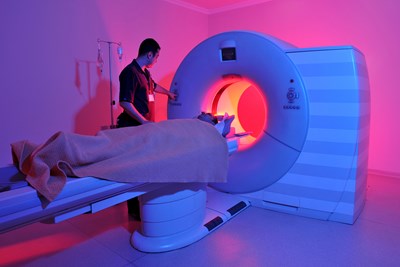When malignant (cancerous) cells arise in the brain tissue to form a tumor, this disease is referred to as brain cancer. Usually, these tumors will grow enough to interfere with essential brain functions including memory, sensations, and muscle control. Other, non-cancerous tumors can develop in the brain as well—these are referred to as benign tumors.
If the tumor originates in the brain and is composed of brain tissue, then it is a primary brain tumor, while tumors that have spread from other body sites are called metastatic or secondary brain tumors. The severity of the tumor will be determined based on two factors: how quickly the brain tumor is growing, and the location of the tumor.
Symptoms
Signs and symptoms for brain tumors will vary depending on how fast the tumor is growing, how large it is, and where it is located. However, there are some general signs and symptoms that you can look for. These include:
- Headaches
- Nausea and/or vomiting
- Vision problems
- Loss of sensation or movement in a limb
- Balancing difficulties
- Difficulty with speech
- Confusion
- Personality changes
- Seizures
- Hearing problems
Causes
Tumors that originate in the brain are quite uncommon. These types occur whenever normal brain tissue cells acquire mutations in their DNA. The mutations cause the cells to grow and divide at an abnormally rapid rate, which results in a mass (tumor) developing.
Cancer that begins in a different part of the body and then metastasizes to the brain is much more common. The types of cancer that most frequently spread to the brain include breast cancer, colon cancer, kidney cancer, lung cancer, and melanoma. Rarely, the presence of a secondary brain tumor will be the first indicator that the original cancer exists.
Treatment
Brain cancer treatment depends on many factors such as the location, size, and type of tumor. Your personal preferences and overall health will be taken into consideration as well. The most common treatment options include:
- Surgery: If it is at all possible to remove the tumor surgically, this is usually the first plan of action. Sometimes, complete removal is possible if the tumor is small enough and located in a place that makes it easy to separate from surrounding brain tissue. However, surgery can be very risky if the tumor is located in a sensitive area of your brain.
- Radiation: This type of therapy uses high energy beams to kill tumor cells from outside your body. Sometimes radiation will be focused exclusively to the area of your brain where the tumor is located. But other times, whole-brain radiation may be necessary.
- Chemotherapy: This treatment uses drugs to kill cancer cells, taken either in pill form or injected directly into your vein. The most common chemotherapy drug used to treat brain cancer is temozolomide.
- Targeted drug therapy: Unlike chemotherapy, targeted drug therapy is able to specifically target and kill only cancerous cells while leaving healthy cells unharmed.




